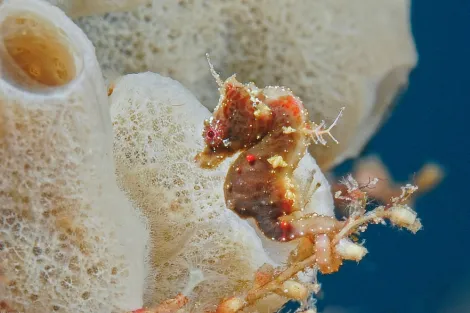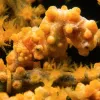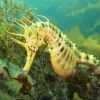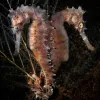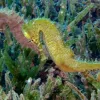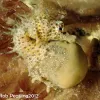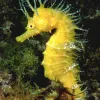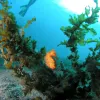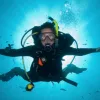There are 47 different species of seahorses and 14 of those were discovered in the last eight years, including Pontoh's pygmy seahorse (Hippocampus pontohi), which was officially named in 2008. Seahorses’ ability to change their color and shape to blend in with their environment makes identification of individual species challenging. Because of this, some researchers previously thought there were as many as 200 seahorse species in the world, while others thought there were as few as 20. However, advances in genetic research are helping to clarify some of the differences between closely related species.
10 Things You Never Knew About Seahorses
By Lindsay Aylesworth, Project Seahorse
The day I stepped into my wetsuit, donned my mask, and embarked on my first scuba dive was the day I decided to be a marine biologist. Little did I know that my love of the sea would lead to studying one of the coolest, most charismatic yet cryptic creatures: the seahorse. It all started with an undergrad project where, as luck would have it, I was unknowingly "saddled" with this amazing group of animals, which has now turned into a life-long passion and the subject of my Ph.D research.
Seahorses are caught for the aquarium and traditional medicine trades, but their biology and habitat associations make them susceptible to decline. My research focuses on how seahorses grow and reproduce in areas with and without fishing to ensure seahorse fisheries are sustainable. Seahorses have so many unusual characteristics and behaviors that it’s easy to see why they’re so interesting to study. So for all those ocean enthusiasts and those who are yet to be converted, here are my top ten fun facts about seahorses.
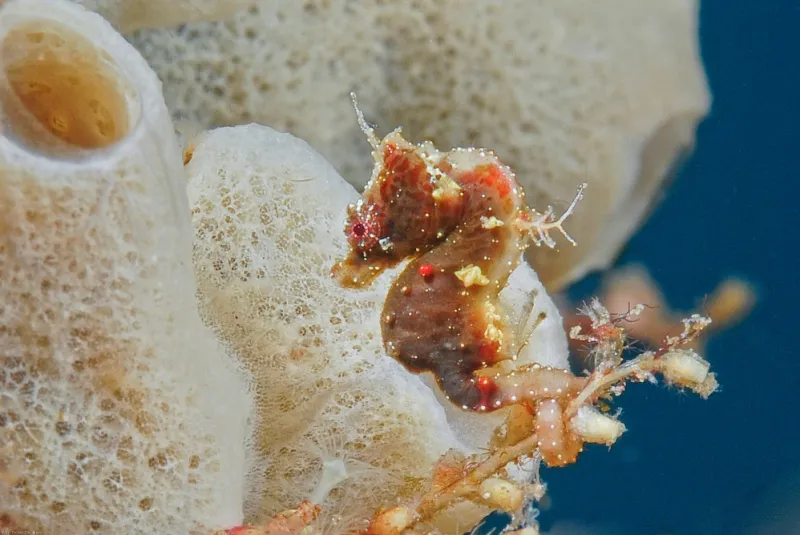
How Many Seahorse Species?
Credit: Patrick Decaluwe / Guylian Seahorses of the World 2010, Courtesy of Project Seahorse.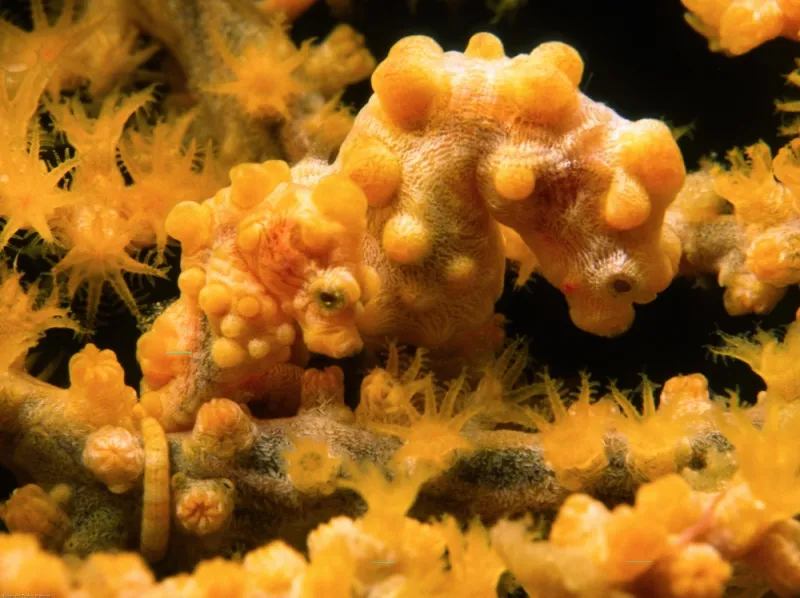
Can You Spot the Seahorse?
Credit: Sam Taylor / Guylian Seahorses of the World 2005, courtesy of Project SeahorseIt's a pygmy seahorse (Hippocampus bargibanti), found in Indonesia's biodiverse Coral Triangle and one of the smallest seahorse species in the world! They can change colors like a chameleon to blend into their environment. This helps to protect them from predators and ambush their prey. Read ten things you never knew about seahorses.

A Foot-Long Seahorse
Credit: David Maynard / Guylian Seahorses of the World 2005, Courtesy of Project SeahorseSeahorses range in size—from as small as a pine nut to as large as a banana. The largest seahorse species (pictured here) is Hippocampus abdominalis, or the big-bellied seahorse, which can reach more than a foot long (35 cm) and lives in the waters off Southern Australia and New Zealand. The smallest seahorse, Satomi's pygmy seahorse (Hippocampus satomiae), which was only described in 2008, is only half an inch long (13 mm)! It lives in the waters of Brunei, Indonesia and Malaysia.

Seahorse Lovebirds
Credit: Bettina Balnis/Guylian Seahorses of the World 2010, Courtesy Project SeahorseMost wild seahorses (here the thorny seahorse Hippocampus histrix) are monogamous and some species mate for life. Searching for mates can be difficult and risky since seahorses are poor swimmers, found in low densities and rely on camouflage to hide from predators. By remaining faithful to one partner, the pairs have more time to undergo more pregnancies during a single mating season and, ultimately, have greater reproductive success. The pair-bonds of monogamous seahorses are reinforced by daily greetings. Find out 10 things you never knew about seahorses in our slideshow.

Dancing Seahorse Pairs
Credit: Herwig Helsen/Guylian Seahorses of the World 2010. Courtesy of Project Seahorse.Seahorse couples, such as this pair of thorny seahorses (Hippocampus histrix), greet each other every morning with a unique dance that sometimes involves changing color. The couple promenades and pirouettes together for several minutes before separating for the rest of the day. They greet each other as a way to confirm the other partner is still alive, reinforce their bond and synchronize their reproductive cycles.

A Pregnant Seahorse
Credit:Rob Peatling, Flickr
Instead of females, male seahorses carry the developing seahorse embryos in a kangaroo-like pouch. During mating season, the female deposits her eggs into the pouch, and the male fertilizes them. After about two weeks of development, out pop the seahorse fry, ready to swim off and explore the ocean world. Here is a very pregnant short-snouted seahorse (Hippocampus breviceps) in Australia. Read ten more things you never knew about seahorses!

A Cold-Water Seahorse
Credit: Peter Ryngaert/ Guylian Seahorses of the World 2005. Courtesy Project Seahorse.Seahorses are not just tropical creatures. They can be found in colder waters like those found off New Zealand, Argentina, Eastern Canada, and the UK. This long-snouted seahorse (Hippocampus guttulatus) can be found in UK waters.

Seahorses Make A Racket
Credit: Erin Porter c 2011 (Hippocampus erectus)Seahorses make noise! Seahorses make noises that can be heard underwater similar to the sound of smacking your lips. They make them during feeding and courtship.
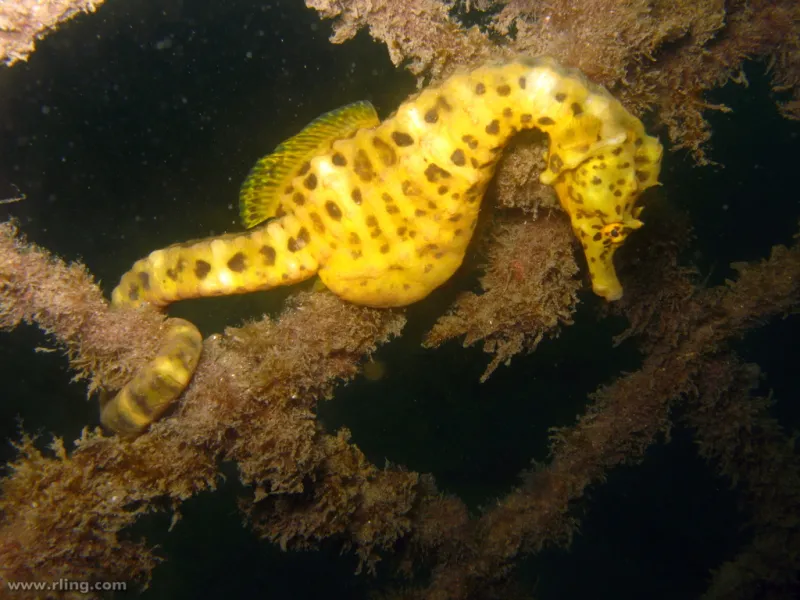
Seahorses Have Monkey-Like Tails
Credit: Richard Ling / www.rling.comSeahorses are the only fish species that can hold your hand! Unlike most fish that use their tails for swimming, seahorses, such as this longsnout seahorse (Hippocampus reidi), use their monkey-like tails to hold onto objects in their environment, like corals or seagrass.
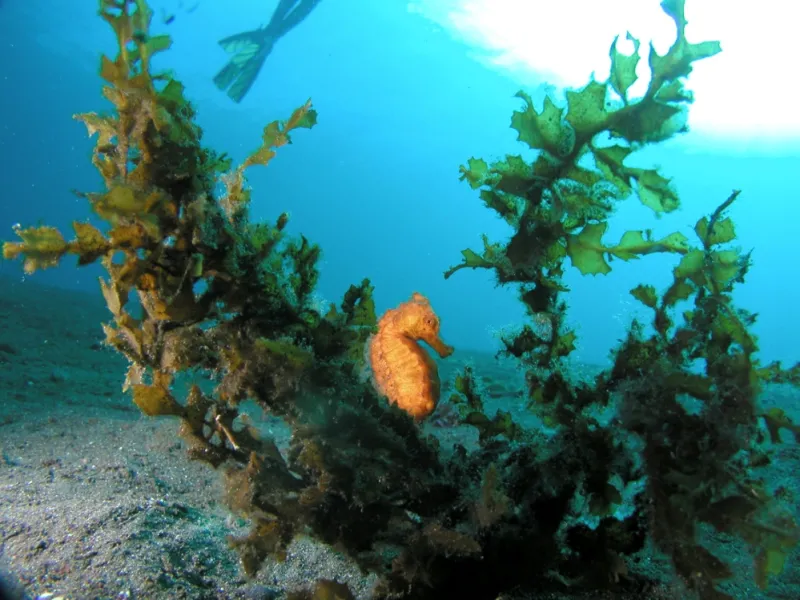
Hitchhiking Seahorses
Credit: Joel Butnick, Guylian Seahorses of the World 2005. Courtesy of Project SeahorseSeahorses are hitchhikers. They can travel long distances across the ocean—farther than they can swim—by attaching themselves to floating seaweed and debris. Read 10 more facts you never knew about seahorses.
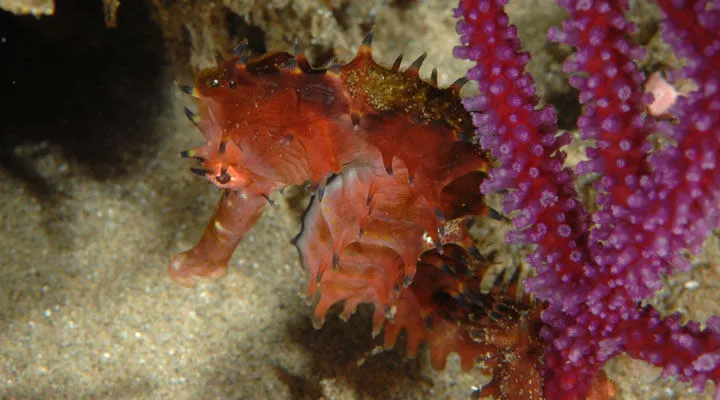
Longspine Seahorse
Credit: FishWise ProfessionalThe longspine seahorse (Hippocampus histrix), named for the spines covering its body, has a long snout and eyes that move independently of each other. Like other seahorses, the male carries the eggs and gives birth. Check out some other seahorse species - the pygmy seahorse and the longsnout seahorse.

Lindsay Aylesworth
Credit: Giles Winstanley / pelagicon.com © 2008Lindsay Aylesworth is a PADI dive instructor, marine biology consultant and PhD student with Project Seahorse at the University of British Columbia. Lindsay has carried out monitoring and survey work in the tropical marine environment for ten years, starting as an undergraduate on the coral reefs in the Yucatan coast of Mexico. As a Fulbright Scholar, Lindsay worked in Brazil to identify the habitat preferences of the longsnout seahorse, Hippocampus reidi. She holds a Master's in Coastal Environmental Management from Duke University and a B.S. from Georgetown University. Lindsay's PhD research focuses on implementing international policy for conservation action using seahorses as a case study.


